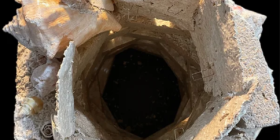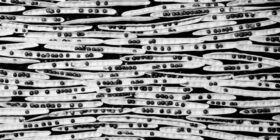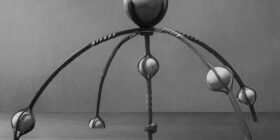Mr. Turner, artist, meets Mrs. Somerville, scientist
The great 19th century English artist J. M. W. Turner had an innovative style that earned him the title “the painter of light” and is considered a forerunner of Impressionism. A different aspect is that Turner’s works were influenced by the technology of the time and its scientists. One such link was with Mary Fairfax Somerville, a Scotswoman recently honored for her pioneering scientific work by her portrait on a Scottish banknote.
The great 19th century English artist J. M. W. Turner had an innovative style that earned him the title “the painter of light” and is considered a forerunner of Impressionism. A different aspect is that Turner’s works were influenced by the technology of the time and its scientists. One such link was with Mary Fairfax Somerville, a Scotswoman recently honored for her pioneering scientific work by her portrait on a Scottish banknote.
Turner’s works vividly portray the sometimes painful transitions due to the technology of the industrial revolution. The Fighting Temeraire (1839, National Gallery, London) shows the sailing man-of-war HMS Temeraire, looking pale and ghostly as a steam-powered tugboat tows her to be broken up, one of the last ships to have distinguished herself at the Battle of Trafalgar, 1805. In Rain, Steam and Speed – The Great Western Railway(1844, National Gallery, London), a train lost in mist but marked by its tall black smokestack hurtles toward the viewer out of an impressionistic swirl of light and color, like technology itself onrushing into an indefinite future.
Turner’s work also reflected current science. His biographer James Hamilton comments [1, 2] that at the time, the Royal Society shared a building with the Royal Academy where Turner exhibited, so that artists and scientists readily mingled. Turner was affected by some of the best of his era. Hamilton writes that studies of the sun by the great astronomer William Herschel changed how Turner depicted our central star; that Turner discussed artist’s pigments with Michael Faraday, the brilliant researcher in electromagnetism and chemistry; and that Mary Somerville was even inspired to visit Turner’s studio.
Somerville too represented innovation and a breaking of tradition at a time when few women engaged in scientific careers. Following contemporary practice, her family though comfortably off gave her only a minimal education; but she fell in love with mathematics and astronomy, and studied them intensively on her own. Her first husband left her a widow with an inheritance that let her build a distinguished career while remarrying and raising several children.
Somerville became famous for her skill in expressing scientific ideas. She made Pierre-Simon Laplace’s classic astronomical work Mécanique Céleste, published in 1829, widely accessible through a double translation, from French into English and from “algebra into common language,” as she put it. She also tackled a scientific question that was asked at the time: can light magnetize steel?
To a modern physicist, the answer is “Certainly not!,” but the true connection between light and electromagnetism was not known until much later. In 1813, an Italian researcher had reported that he could magnetize steel with violet light. Somerville repeated this experiment with homey materials, bathing a steel sewing needle with violet light from a prism. Her conclusion, published in 1826: “I am induced to believe that the more refrangible rays of the solar spectrum have a magnetic influence.” This was later refuted and she showed intellectual honesty by repudiating her own result. Nevertheless, her paper was only the second one by a woman in Philosophical Transactions of the Royal Society, and she was later honored in other ways including the new banknote.
Somerville and Turner each left legacies, but did they leave a joint one? The recent biopic Mr. Turner (2014) suggests they did, when its writer and director Mike Leigh imaginatively extends Somerville’s visit to Turner’s studio by having her demonstrate the violet light experiment. This can be read simply as homage to science and art, but Hamilton proposes a definite influence in Turner’s Ulysses Deriding Polyphemus(1829, National Gallery, London). In this scene from Homer’s Odyssey, Turner has painted a violet glow in the northern sky, the direction toward which a magnetic compass needle would point.
We don’t know for sure that Turner had Somerville’s experiment in mind when he put in that violet sky; but as Hamilton’s theory makes clear, what we learn again and again is that science, right or wrong, can inspire artists – in this case, Turner himself, or the movie-maker who later interpreted Turner’s life, or both..
References
1. James Hamilton, Turner (Random House, New York, 2003).
2. ____________, Turner and the Scientists (Tate Gallery: London: Tate Gallery Publications, 1998).
………………
Sidney Perkowitz, Charles Howard Candler Professor of Physics Emeritus, Emory University, Atlanta, GA writes about science, technology and culture. His latest book is Frankenstein 2018. http://sidneyperkowitz.net, @physp
Get the Full Experience
Read the rest of this article, and view all articles in full from just £10 for 3 months.



No comments yet.